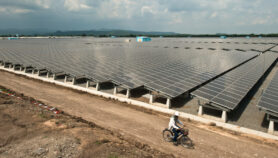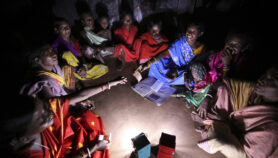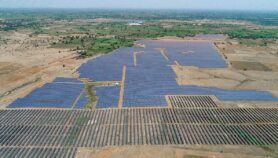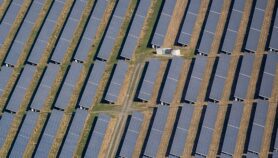By: Brendon Lee
Send to a friend
The details you provide on this page will not be used to send unsolicited email, and will not be sold to a 3rd party. See privacy policy.
[SEOUL] Whenever Lominda Afedraru’s two teenage children return home for the school holidays, she goes through the laborious task of hiding most electrical appliances, especially those in the kitchen.
She also bars them from overusing their computers and keeps a tight watch on the power metres at their home in Kampala, Uganda.
Lominda’s methods of saving on her electricity bills may seem extreme, but that is the reality that Ugandans and many countries in Africa are facing: energy poverty.
According to the World Bank, only 14.6 per cent of Ugandans have access to electricity. About 85 per cent of the country’s population of 37 million live in rural areas and rely on biomass such as firewood and charcoal for their daily needs.
In tropical countries such as Uganda, solar-sourced energy would seem like the go-to solution to solve the energy crisis. But Lominda says investing in solar panels can be very costly even for the wealthy. Silicon-based panels are also not known for being a reliable and efficient power source.
But the entry of a new and exciting innovation in the form of perovskite promises to revolutionise solar thermal energy and how we see and define renewable energy in the future.
What makes perovskite special?
Perovskite is a type of mineral, calcium titanium oxide (CaTiO3) to be precise. It was discovered in 1839 in Russia’s Ural Mountains, by German mineralogist Gustav Rose, so its existence has been known for quite a while. But it was only recently that scientists have realised the potential of perovskite in producing organic-based solar cells.
A perovskite solar panel has a perovskite-structured compound, usually with a hybrid organic-inorganic lead or tin halides-based material and uses the same energy harvesting technology as silicon-based panels. But perovskite is much cheaper and easier to produce in a traditional lab environment.
Researchers from Australia’s Commonwealth Scientific and Industrial Research Organisation and the University of Melbourne recently unveiled a revolutionary technique that allows solar cells to be produced via traditional printing machines.
Scott Watkins, director of the overseas business unit at Kyung-In Synthetic, presented at this week’s 9th World Conference for Science Journalists in Seoul, South Korea, their current research on dual-feed spray coaters for customising panels that are light and flexible. He says they are working closely with Smart Villages to provide cheap renewable energy for rural communities in Africa and Asia.
Making it commercially available
Interest in organic solar panels has increased since the first research paper on it was published in 2009, with 460 papers published in 2014 alone.
But scientists face challenges like efficiency and stability. Currently, perovskite solar panels operate on 20 per cent efficiency and are vulnerable to moisture. There are also concerns that the fragile coating of the films might cause lead contamination.
Nam-Gyu Park, chemical engineering professor at Sungkyunkwan University in Seoul, says that the encapsulation technology is important for long-term fabrication of perovskite solar panels.
“Although lead content in current perovskite panels is relatively small, we are looking into the possibility of lead-free organic panels though this might be difficult as lead is a key component of perovskite,” says Park.
He predicts that solar cells can one day be painted on the roofs of homes and cars.
With funding of up to 9.2 billion South Korean won (US$8.3 million) being pumped into research in the next five years, millions of people in Africa and Asia such as Lominda may soon have access to clean, renewable solar energy and not have to worry about hiding their electrical appliances from their children.
This article has been produced by SciDev.Net's South-East Asia & Pacific desk.














